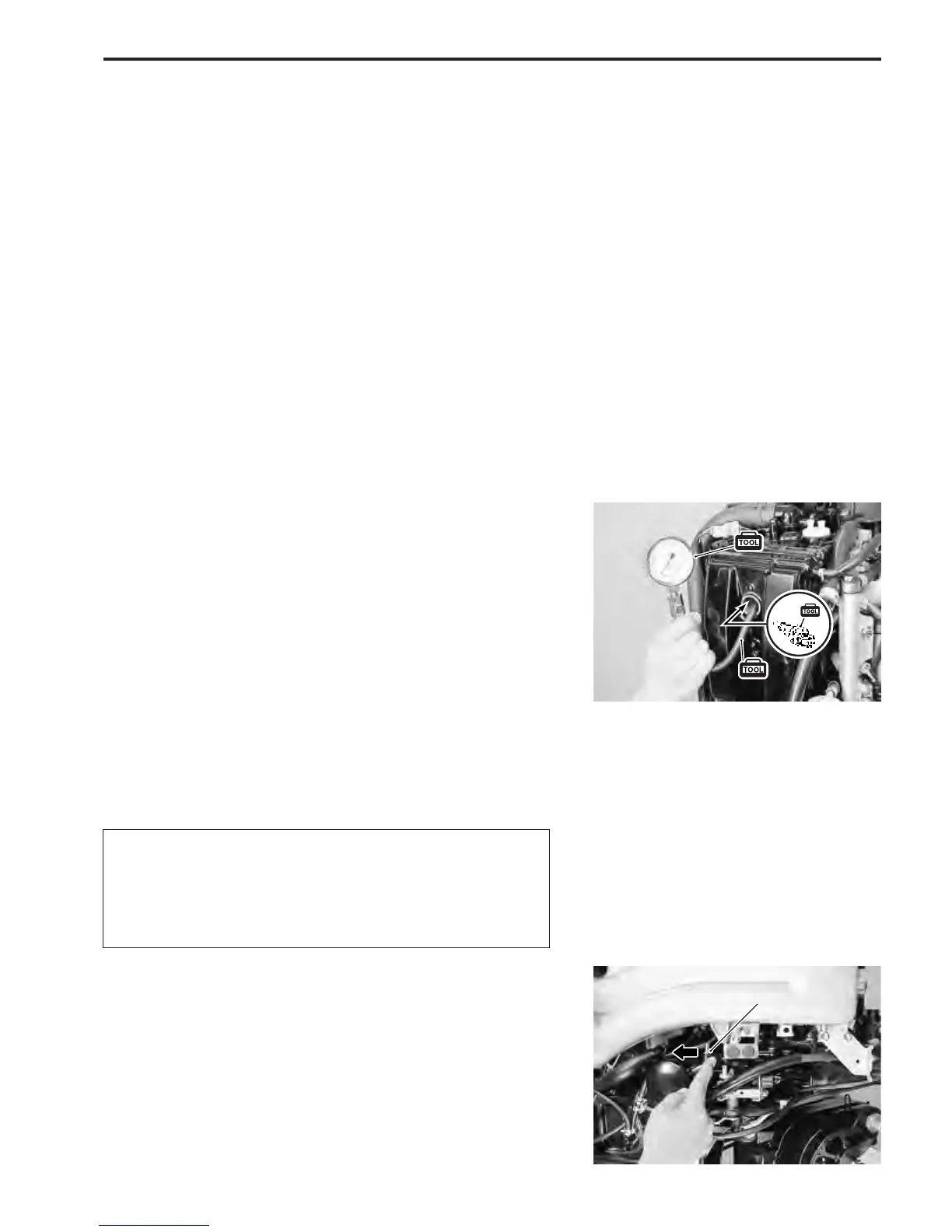PERIODIC MAINTENANCE 2-23
CYLINDER COMPRESSION
Cylinder compression :
Standard : 1300 – 1700 kPa
(13 – 17 kg/cm
2
, 185 – 242 psi.)
Max. difference between any other cylinders :
100kPa (1.0 kg/cm
2
, 14 psi.)
NOTE:
Figures shown are guidelines only, not absolute service limits.
Low compression pressure can indicate one or more of follow-
ing :
• Excessively worn cylinder wall
• Worn piston or piston rings
• Stuck piston rings
• Poor seating of valves
• Ruptured or otherwise damaged cylinder head gasket
TEST PROCEDURE
1. Start engine and allow to warm up, then shut engine off.
2. Remove STBD / PORT side covers.(See page 7-2)
3. Remove all spark plugs.
4. Install compression gauge hose attachment into plug hole,
then connect compression gauge hose to gauge hose at-
tachment and compression gauge.
\ 09915-64512 : Compression gauge
09915-64530 : Compression gauge hose
09915-67010 : Compression gauge hose attachment
5. Disconnect safety lanyard (switch plate) from emergency
stop switch.
Throttle leverThrottle lever
#
Disconnect the safety lanyard from the emergency stop
switch prior to cranking the engine.
This will prevent any residual fuel discharged from the
cylinders being ignited by a spark discharge from the
spark plug caps.
6. Disconnect remote control throttle cable from throttle lever.
7. Move and hold throttle lever in full-open position.
8. While cranking engine with starter motor, note maximum
compression pressure reading on gauge for each cylinder.
9. Reinstall parts removed earlier. (spark plugs, side covers,
etc.)

